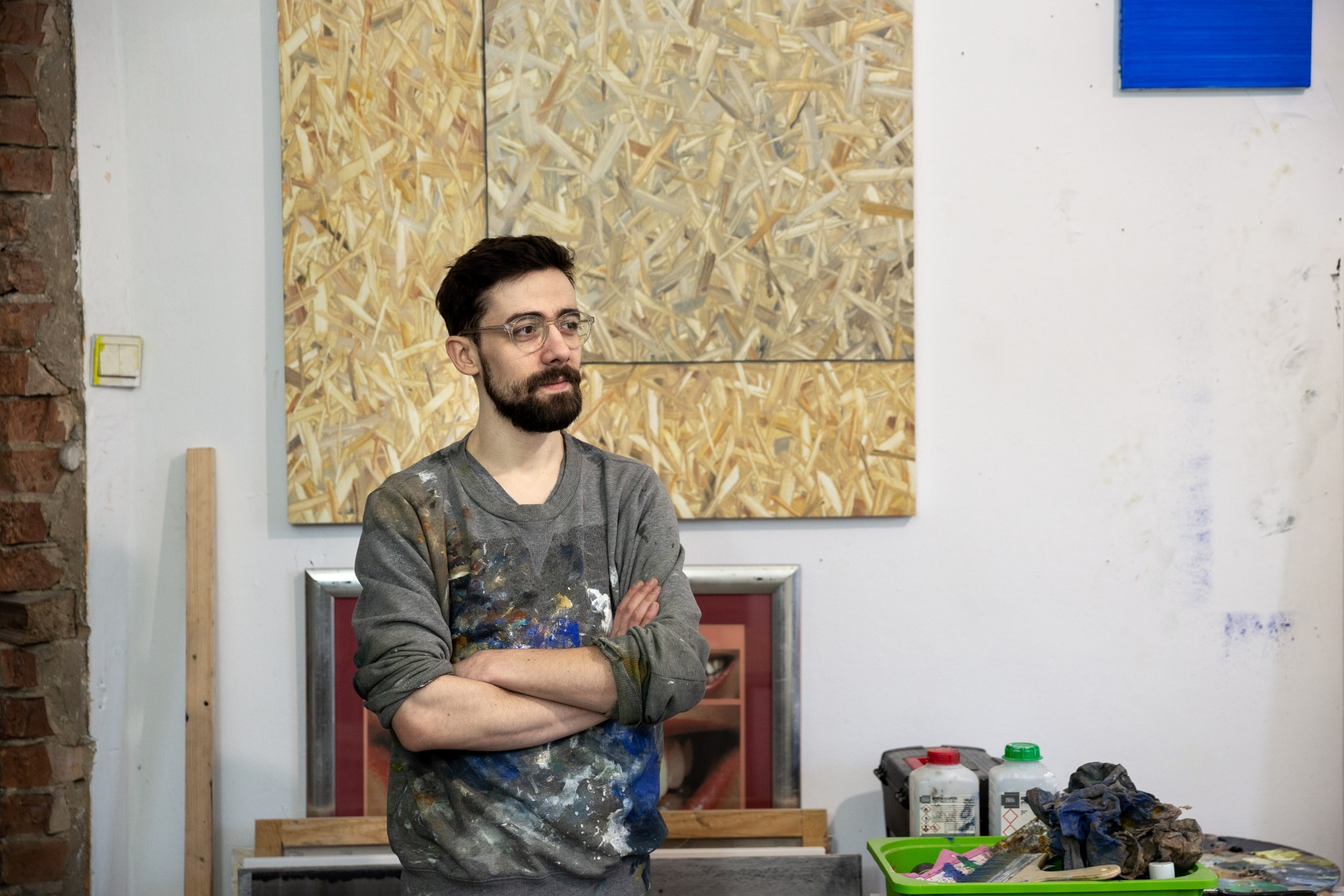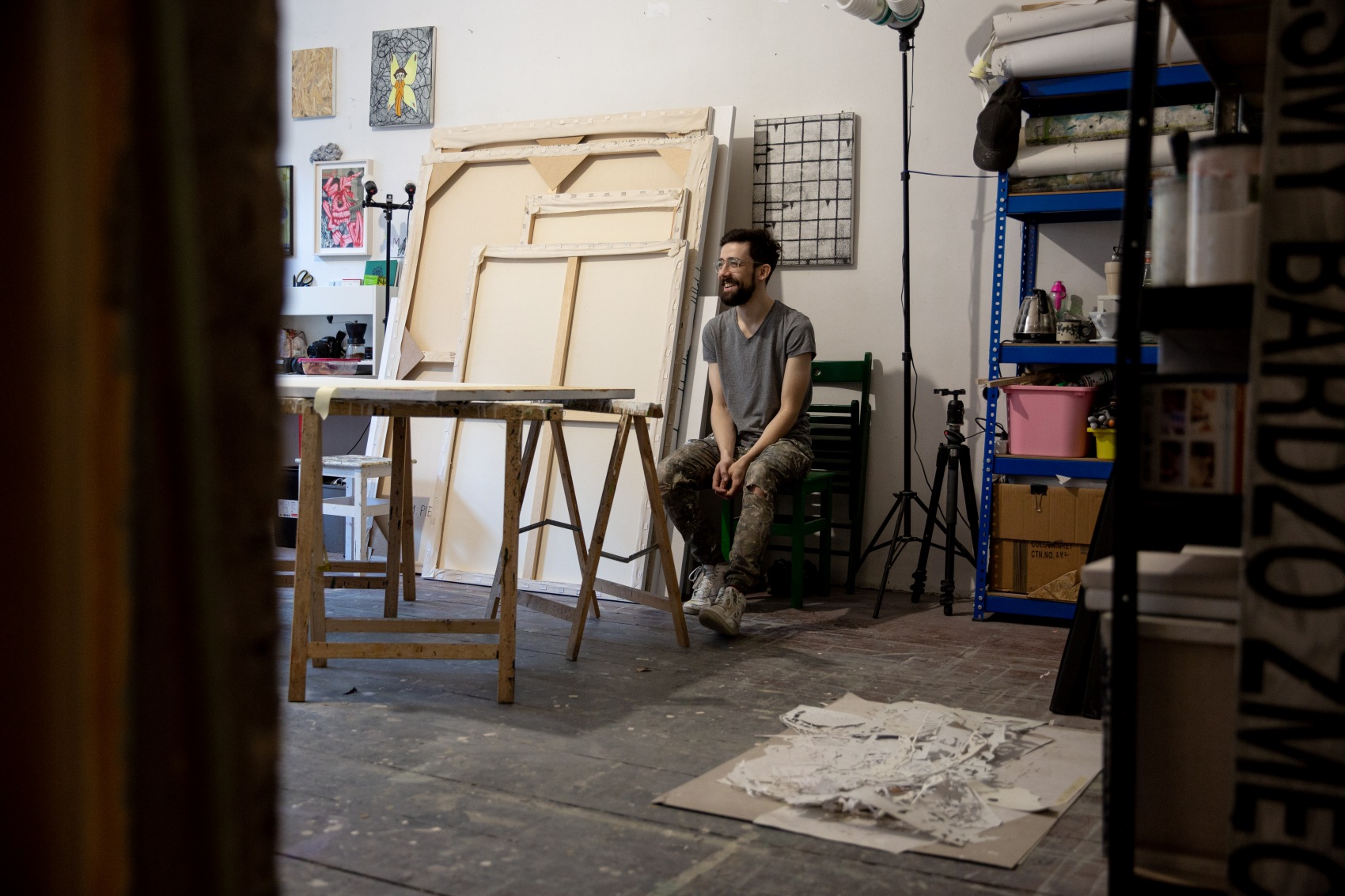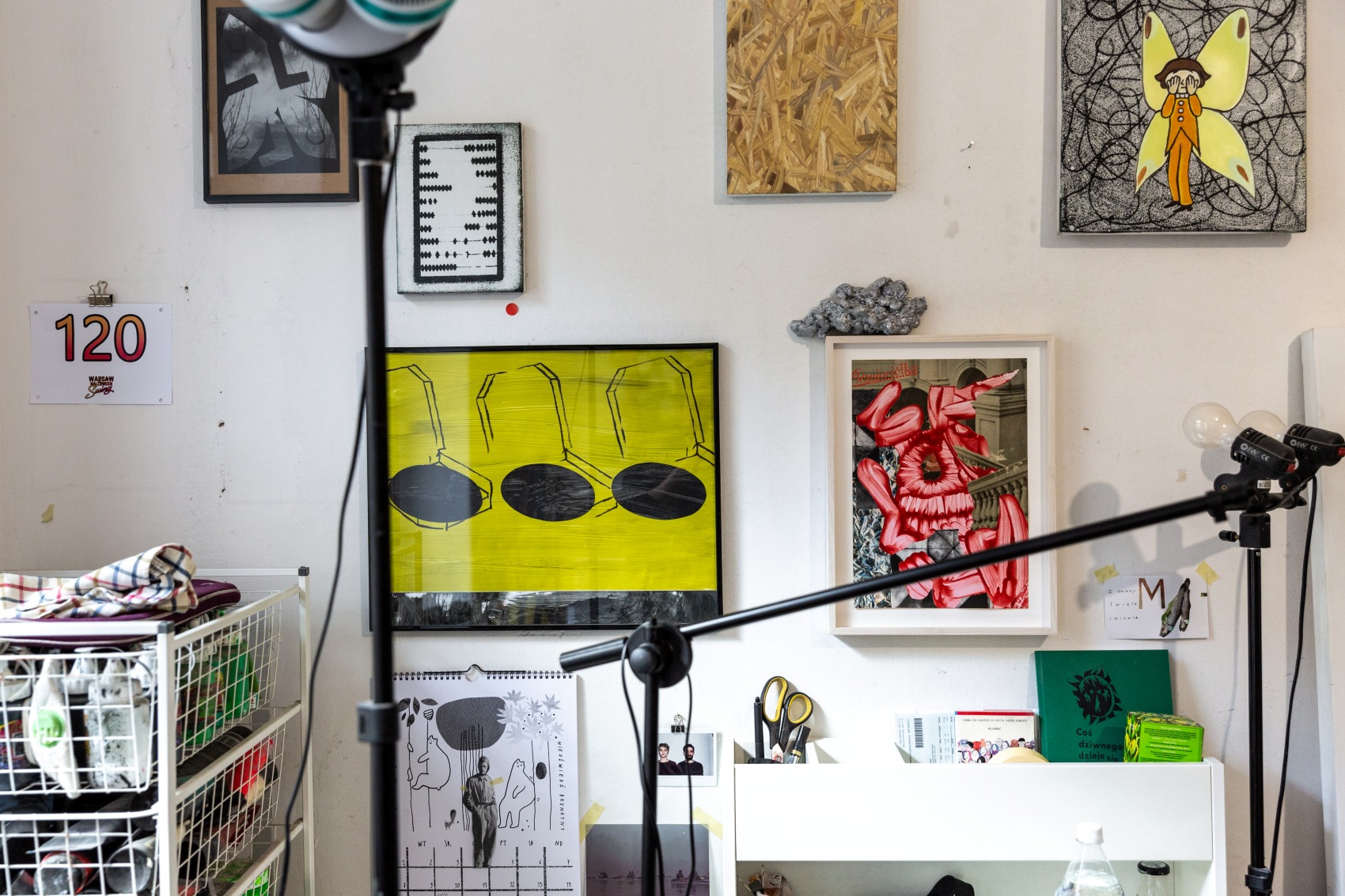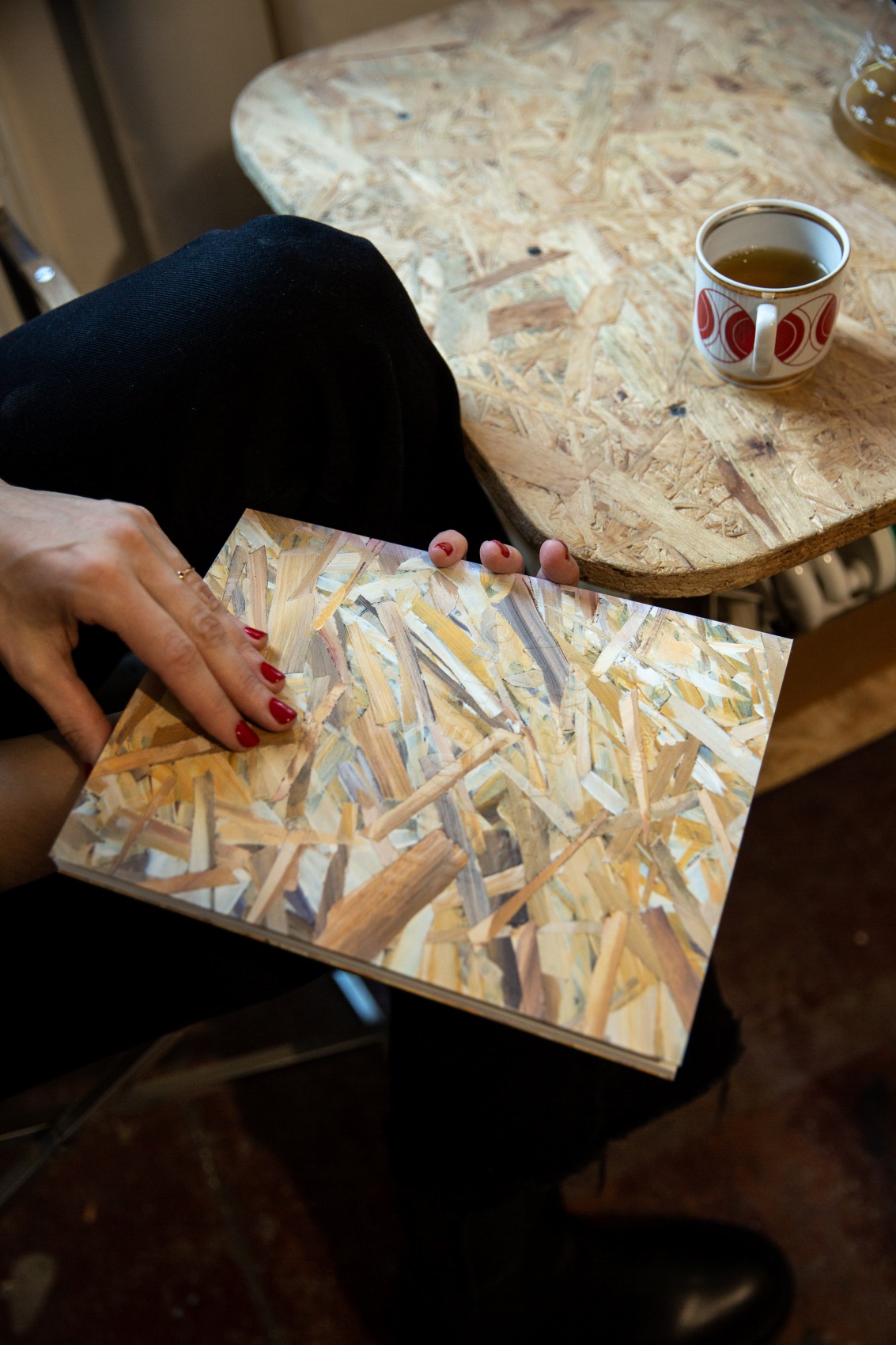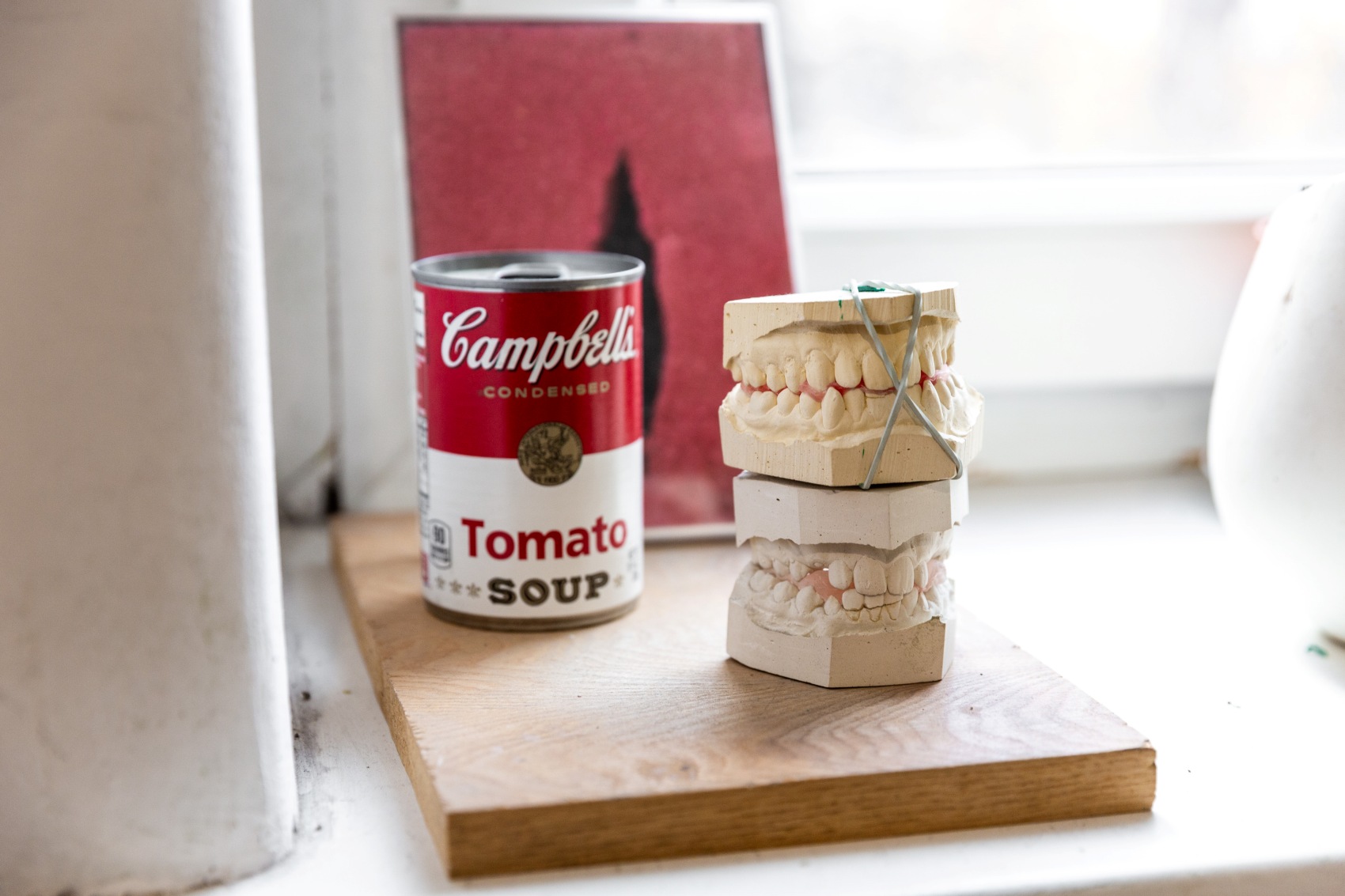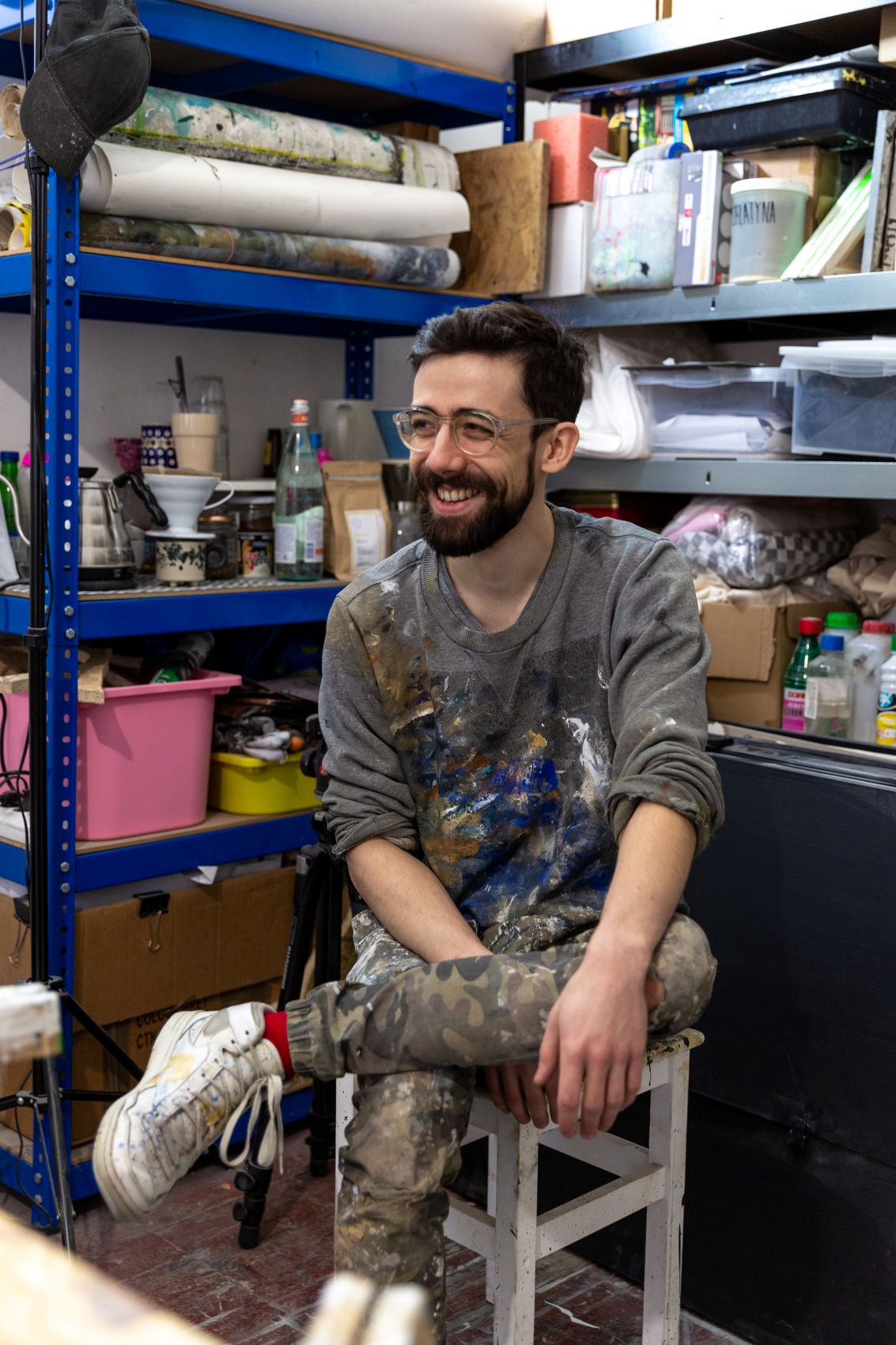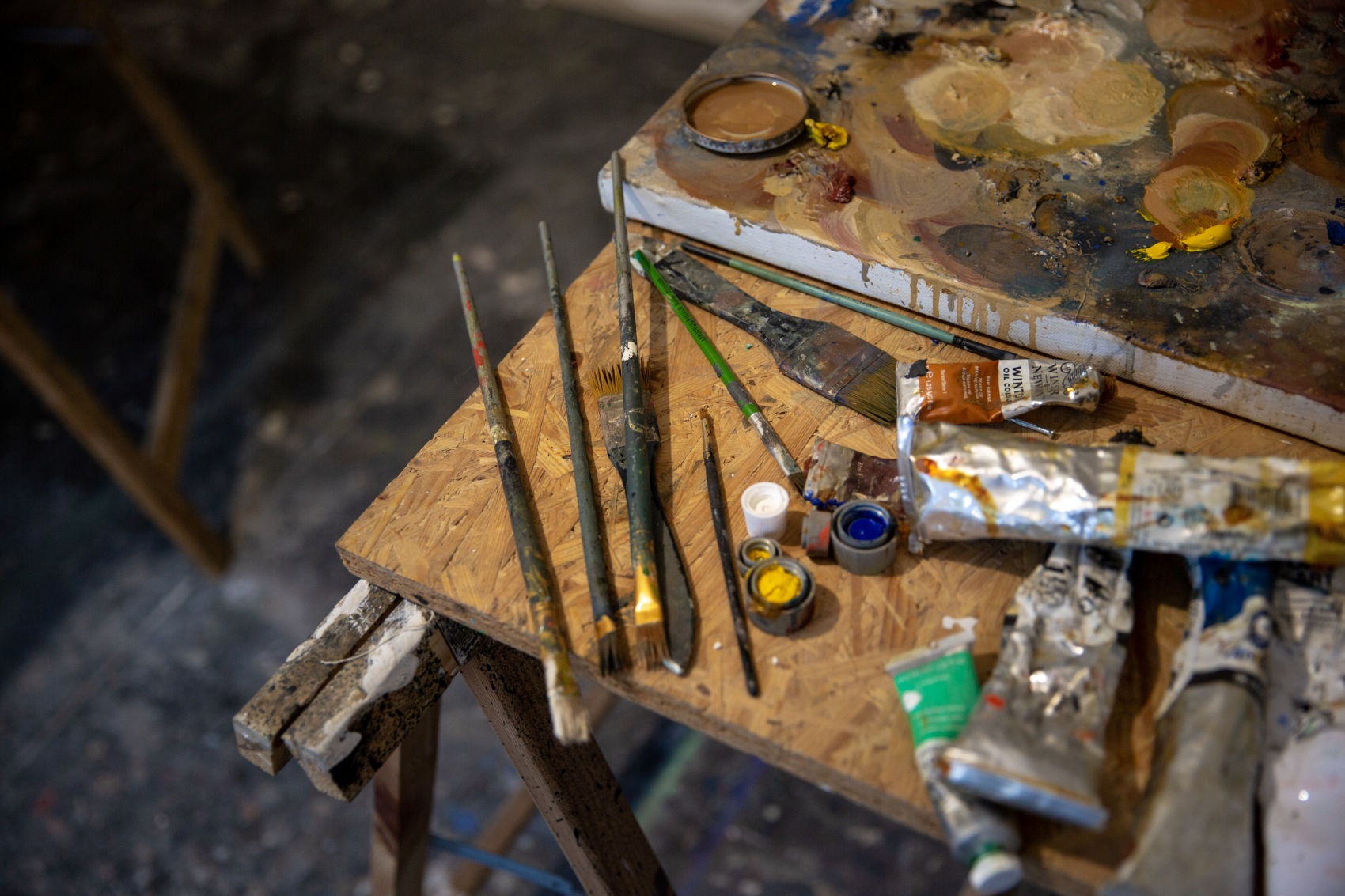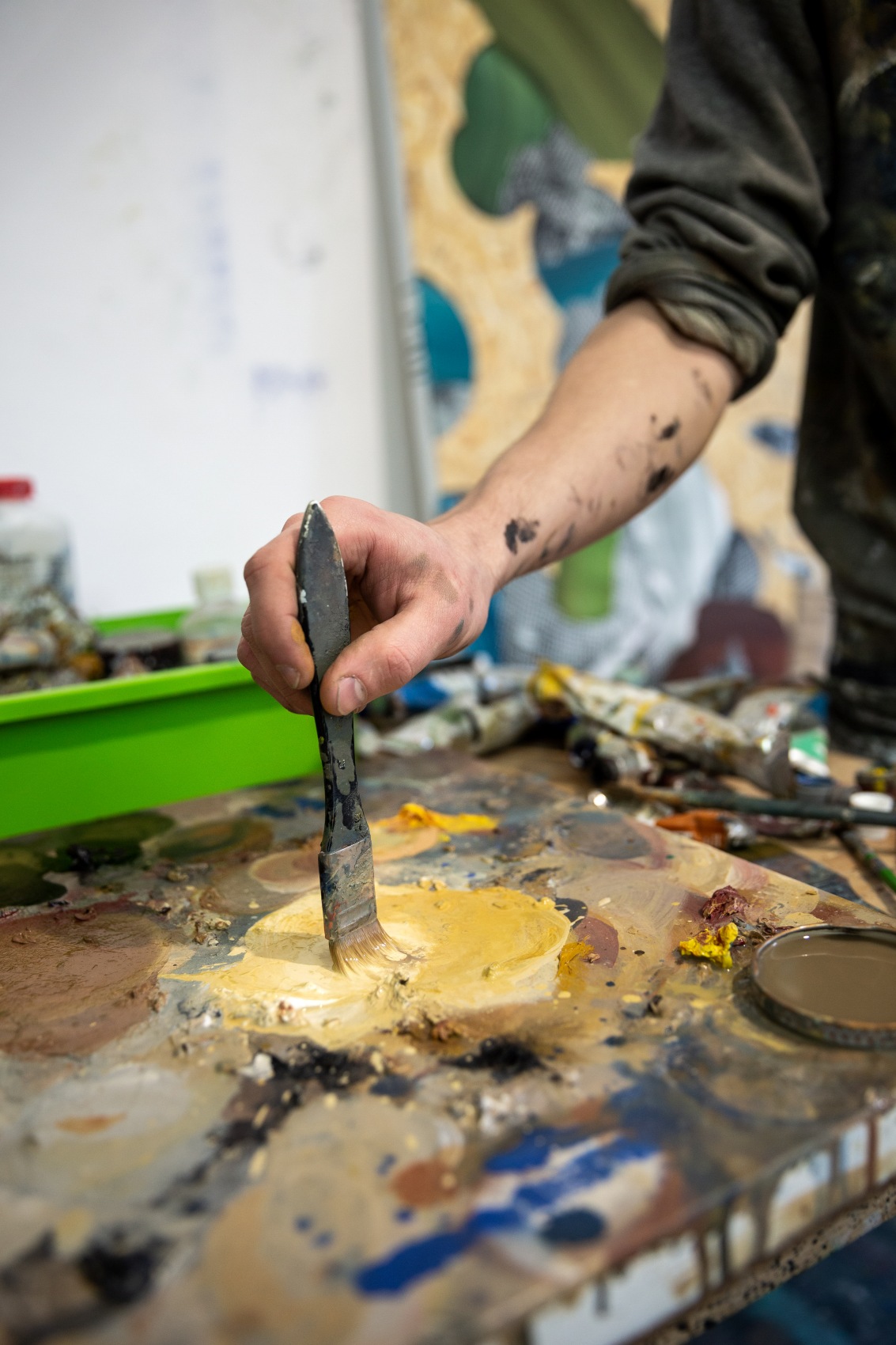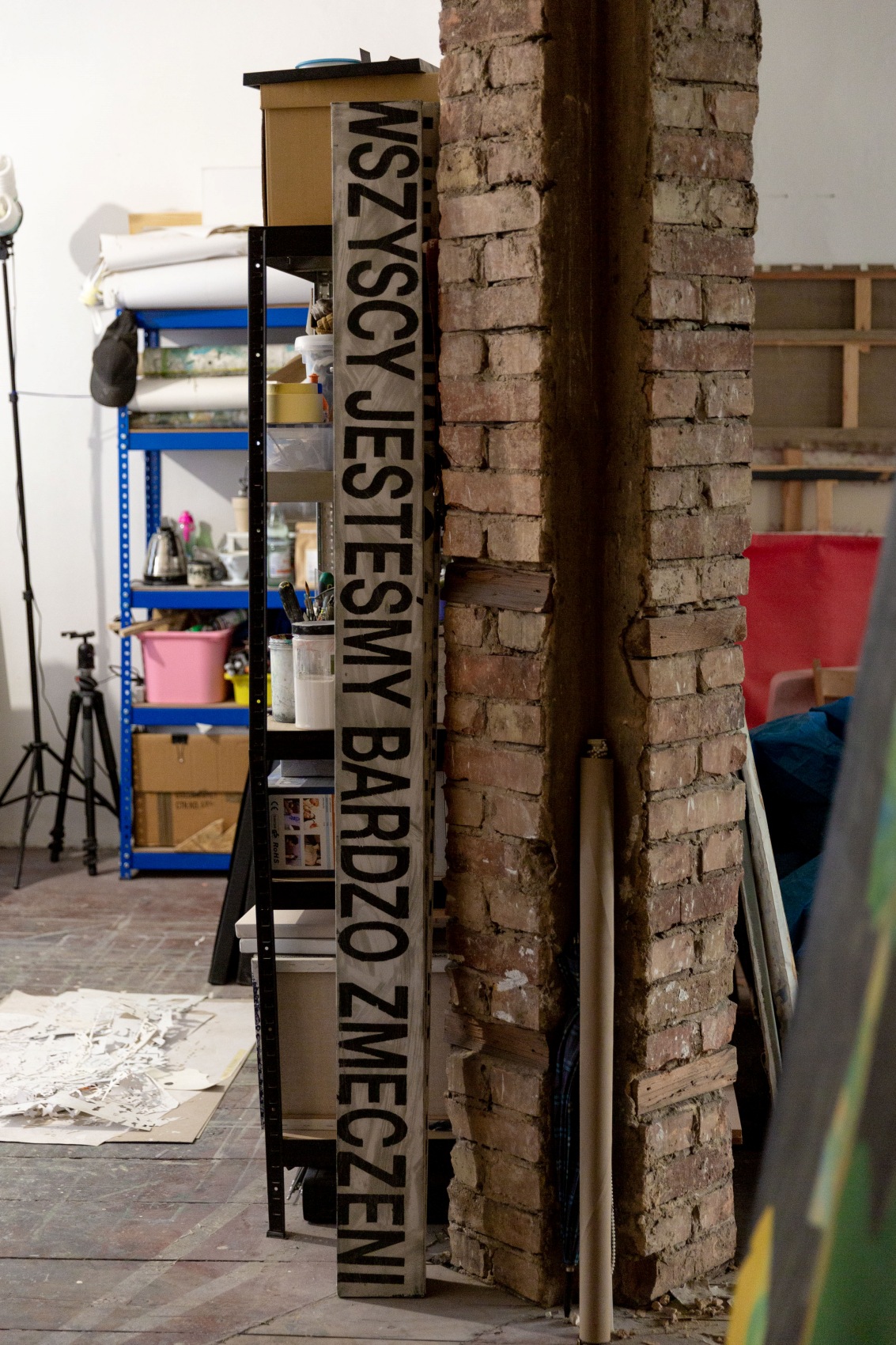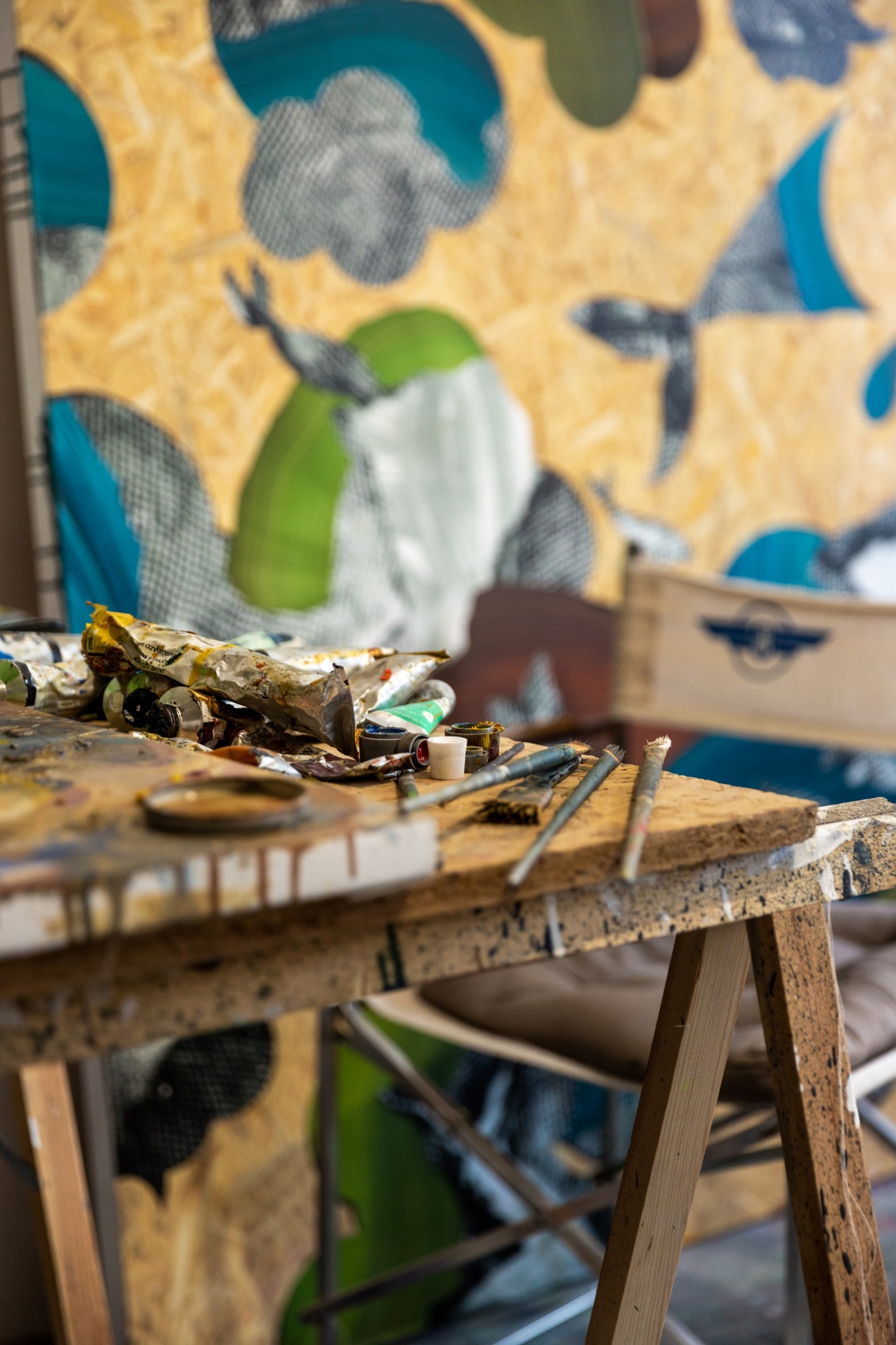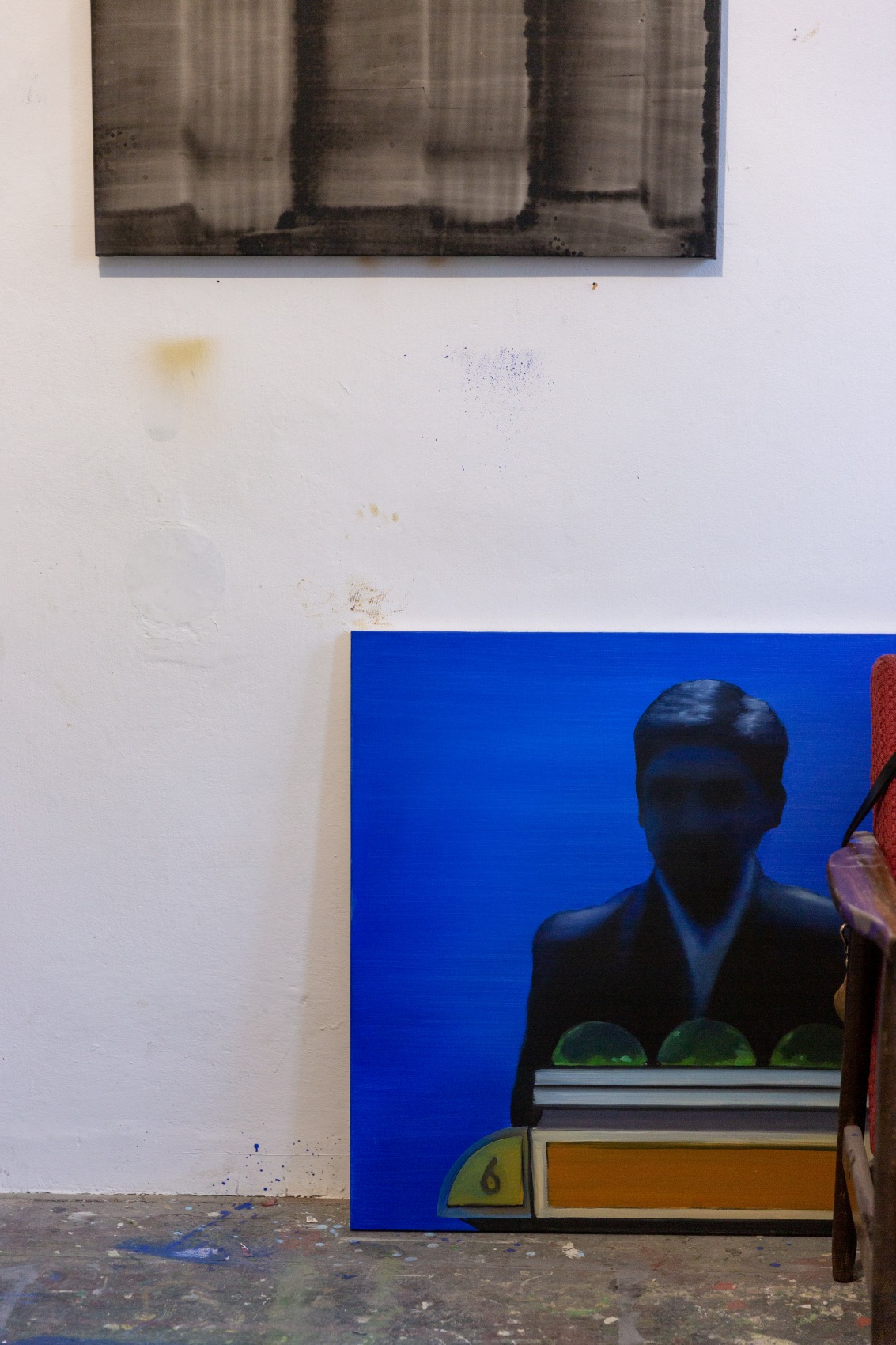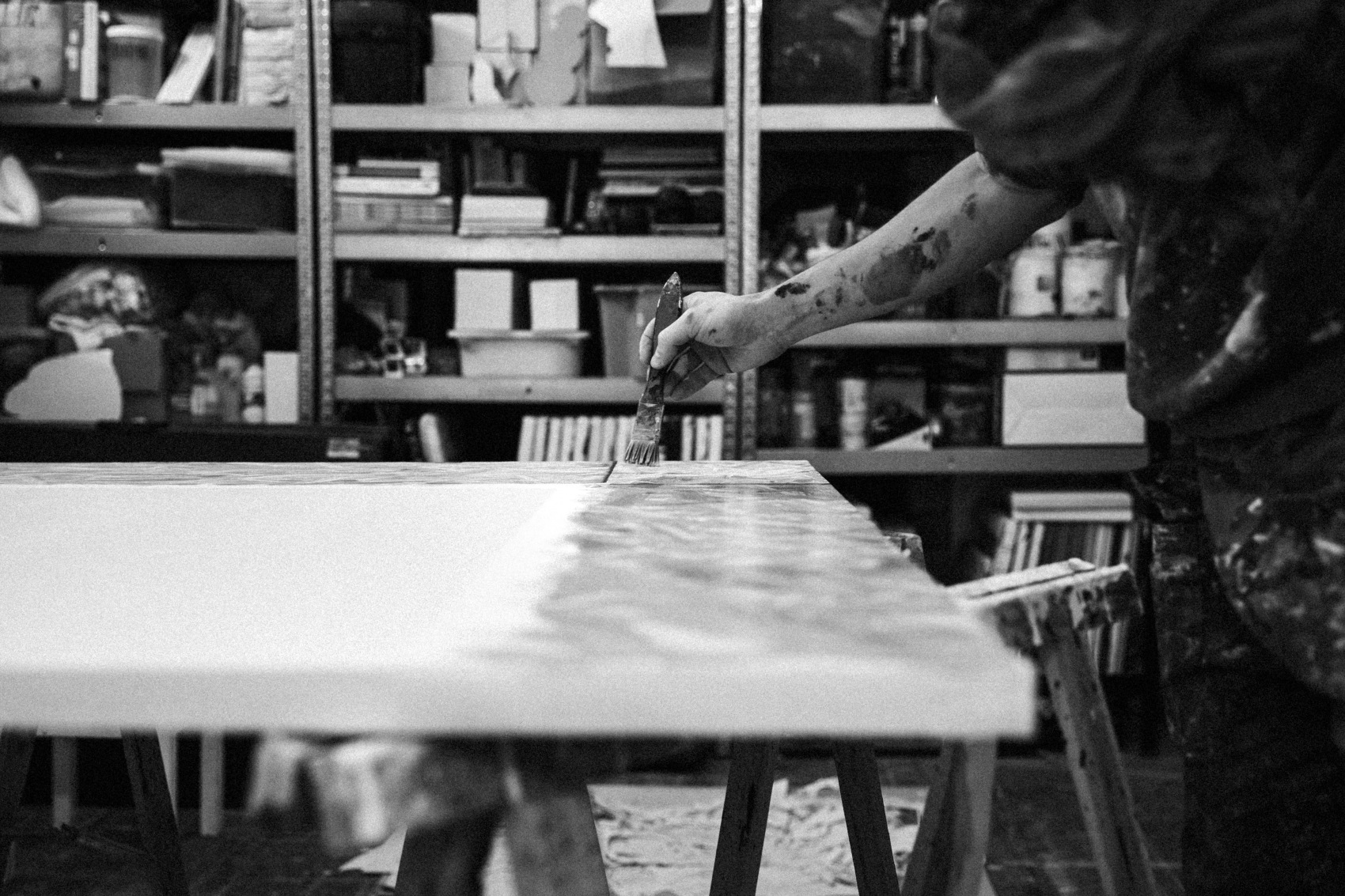Full of intriguing objects, scraps of matter and life, which return in the paintings like afterimages of memories. The studio of the artist Mateusz Piestrak is a laboratory for ideas. This is where things and ideas meet, and trigger impulses to search for new images – first in the imagination, then on canvas. Visual artist Mateusz Piestrak is interviewed by Agata Kiedrowicz
Mateusz Piestrak’s works are available on the platform www.onarte.pl as part of the exhibition ‘OBJECTS FOR THINKING. CURATORIAL SELECTION OF ON*ARTE AND WHITEMAD ART”. More information can be found by clicking HERE.
Agata Kiedrowicz: Do you have artistic pleasures? What do they consist of, and when do they turn into a painting?
Mateusz Piestrak: I function in the mode of constantly noticing different images. Not in the sense of finished compositions, but of catching fragments of reality and converting them into some possible visual material for use. I put these ‘files’ somewhere in the back of my mind, including on the computer – I take a lot of photographs. The less interesting they are at first glance, the better. The moment two pieces that are alien to each other start to come together in a non-obvious way, the process of creating an image begins. At first in my head, then in sketches, usually on the computer, but sometimes also analogue, on pieces of paper. Even before I start painting, the image matures and becomes a reality in my imagination. When I approach the canvas, I already know what it will look like, what it will be about, what fragments it will consist of, and how I will put them together. At this stage nothing usually surprises me anymore. What comes next, the physical painting, is a process that I actually associate with fun, with solving a puzzle, an exciting task. The process may surprise me possibly with some nuances that give artistic pleasure. The way the paint settles on the canvas, or the fact that some element of the design has failed to translate into the composition and an interesting mistake has been made. But these are rather minor surprises.
Is there a key according to which you glue the individual fragments together? Which sense works most intensively in the process of stimulus selection?
By far the most important for me is sight. I convert everything I experience into images. In that sense, I also feel that I flatten everything I see in some way. It’s not about a superficial view of things, but an interest in surfaces that sometimes have a second, third bottom, hidden meanings. Painting is about showing the surface of things. Behind this façade are associations, and it is these that I use as a glue to bring together the various elements of the painting into non-obvious juxtapositions. The kind that wouldn’t happen in reality or that stimulate the imagination.
You emphasise that painting is surface-based. You collect meanings, processed by your sensibility, and reduce them to a flat surface, which you then suggest to the viewer in the form of a painting. Do you want the viewer to solve the puzzle, to decode what the composition is made of?
I am well aware that with this superficiality I am playing, provoking. Both I and the viewer know that behind the flat surface there are various things hidden. Sometimes I play with the illusion of spatiality, or the obscuring or revealing of different layers of canvas in a painting. I suggest that behind these facades, further layers, further meanings can be found. While I talk a lot about this surface, I absolutely do not stop there. The idea is to bring everything down to the flat views first. And then dig into them and find different contexts, interpretations.
And when do you title your works?
It varies with the titles. Sometimes it’s the case that I already have paintings or very specific concepts ready to go, but I have absolutely no idea what words to put with them. Recently, I’ve started to be more sensitive to words. They have started to give me different ideas for images. Because although I don’t use language or text in my work, I pay a lot of attention to what words I hear in conversations or media messages. I also like to take words out of context and look at how they can be combined with other bits of text, creating somewhat poetic juxtapositions. I’ve also started to catalogue interesting buzzwords that might become images in the future when I find the right visual material.
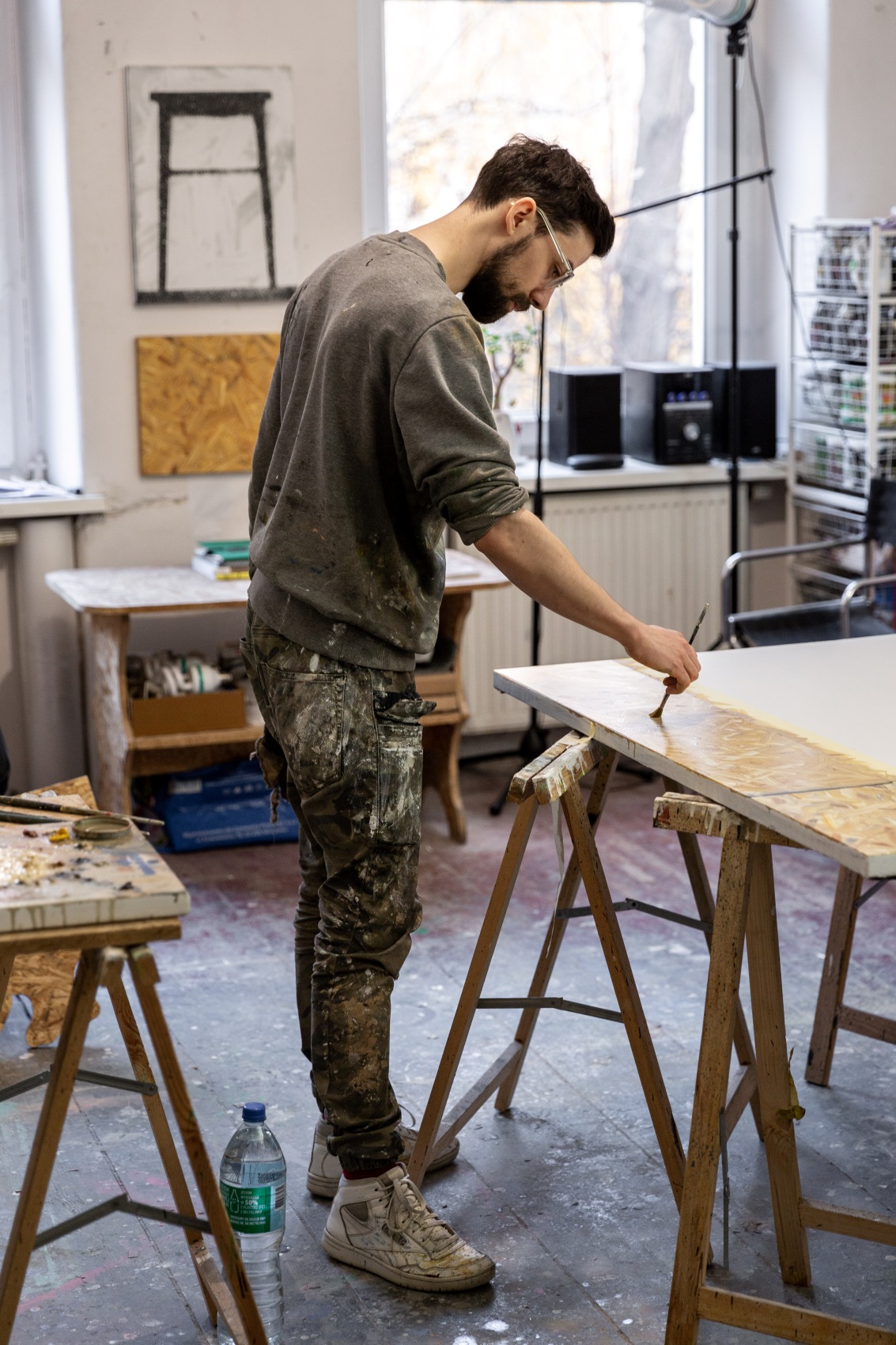
What lies behind the surface of the image? What are your techniques, your working tools? You work very methodically, meticulously preparing the project in the computer, while the process of creating the painting itself is a collage of various authorial techniques.
I like to achieve as many different visual qualities as possible in my paintings, resulting from the prepared designs. I often invent, for my own purposes, quite complicated techniques for obtaining various textures or plastic qualities. For example, I bathe paintings in the shower, transferring my experience from the photographic darkroom – in order to reproduce the graininess of an old painting on a painter’s canvas. I use stencils and sticky tape to create sharp edges, reminiscent of paper cuts in a collage. Sometimes I paint with a brush, but this is, however, quite rare for me.
You refer to yourself as a painter, not a visual artist, although you rarely use a brush and paints. Who is a painter today?
A painter doesn’t have to wield a paintbrush and paints, and sit at an easel in a beret. A painter is first and foremost someone who simply creates images. Using his own hands, he shows fragments of experienced or found reality on a plane. And by means of these planes, or those surfaces I mentioned, he communicates something profound, but in a very simple way. It seems to me that painting is something very simple.
Here I would argue. If only in terms of the complexity of the techniques .
Although the techniques and methods of painting can be complicated and labour intensive, the very gesture of painting a picture, the very idea of communicating thoughts in a visual way, is something simple in the sense that it is a fairly primal, material activity.
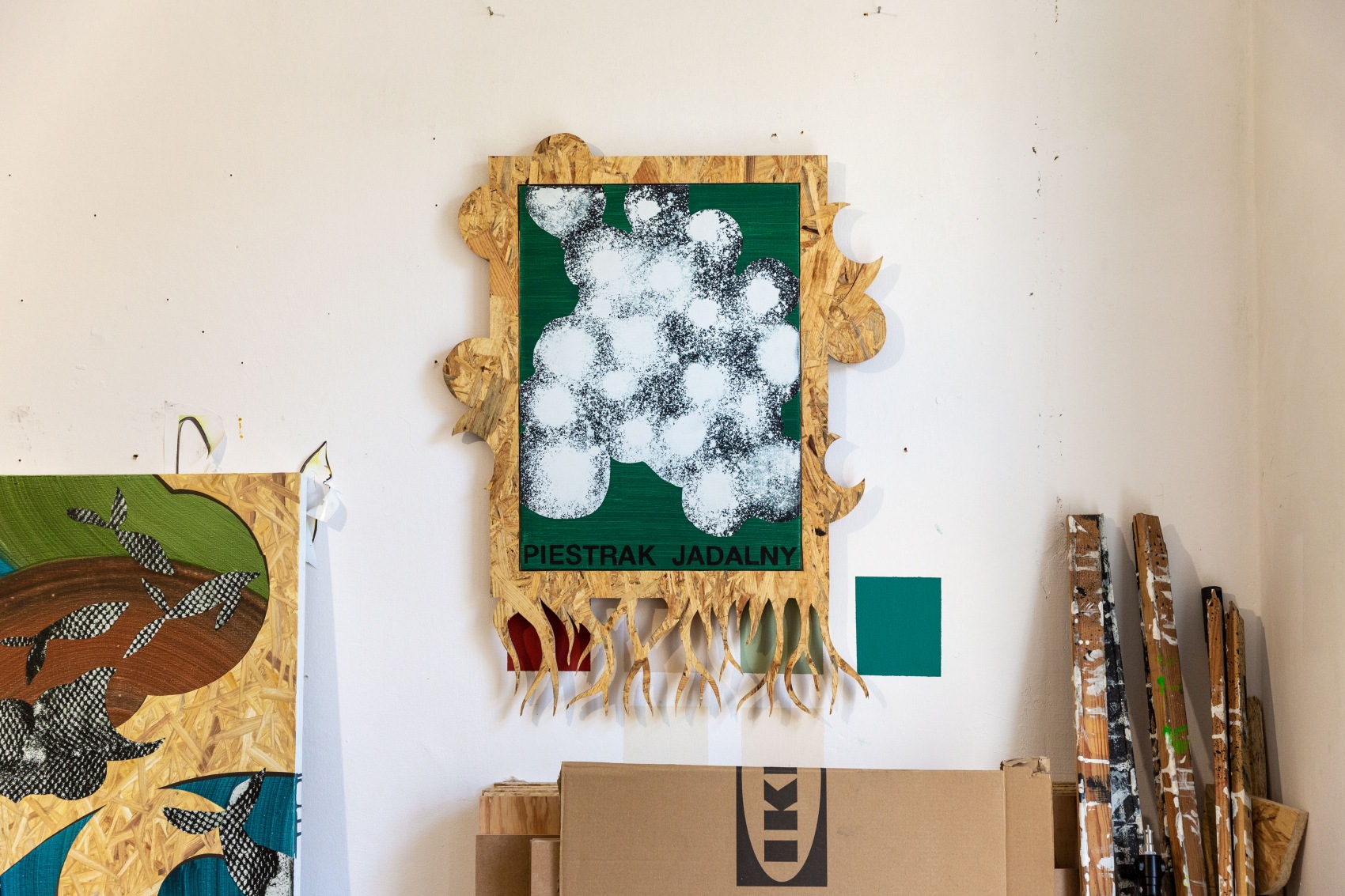
You can find this idea in a series of works in which you imitate OSB in a painterly way. For you, the board, a common and ubiquitous building material, has become a cipher for thinking about contemporaneity, a symbol of the still (un)imminent modernisation, a metaphor for painting and the process of seeing itself.
The very act of seeing OSB in reality and painting it for the first time really stimulated my imagination. I opened myself up to thinking differently about what a painting is. I even mounted some of the works in the OSB series in urban spaces, basically just to prove to myself that I had painted them well, to have the satisfaction of not being seen by anyone. Which, in the context of painting, is a paradoxical situation. The OSB is, in my imagination, a certain metaphor for the condition of reality, or the state I feel – uncertainty about the future. A certain disillusionment with the quality of many things that are happening nowadays.
The board is a very versatile building material, such a thing. This has made it a perfect motif for me to use artistically, to place in different contexts, to repaint. At first glance, it appears uninteresting and boring, and that is precisely why it is so interesting and capacious as a painting motif. I sense great potential in it, which is why I obsessively paint it.
It is amazing what power the gesture of directing one’s attention to an aspect of reality has. Through the prism of my work, I think about the phenomenon of omission and visibility, about our habits and contracts in which we assume what is interesting to us and what is not. Since I’ve been painting OSBs, I’ve started to be very vigilant about the whole environment and the urban space I move through. Suddenly, it turned out that these boards are plentiful and they are everywhere, only I hadn’t seen them before. For some time now, by the way, I have been collecting photos and taking pictures of such places where OSB appears. And I already have hundreds of them. What I find interesting is that my painterly gesture also triggers in the viewer a different kind of alertness, a different perception of the space in which we find ourselves.
How did you technically arrive at this perfect illusion of OSB? A seemingly simple task turned out to be complicated, didn’t it?
At first I thought that painting OSB would be something very simple. That all you had to do was paint the canvas brown and you were done. It turned out to be a very complicated and immersive study of a subject that has a lot of nuances that have to be rendered with great care. I now do it very efficiently and quickly, but it actually took me many months to arrive at a method of convincingly reproducing the texture of a panel on canvas. The easiest way to do this was with brush and paint, although I tried various complicated techniques. At first, it seemed to me that the plate was also a collage of very many cuttings and fragments. And I tried to reproduce the logic of this collage with my old ways on canvas, cutting out each flake of wood one by one. This was terribly labour-intensive and not very satisfying. In the end, it turned out that the most important in theprocess of painting OSB is to achieve a convincing illusion.One in which each individual element is unimportant, while the most important thing is the overall look, the overall impression.
Today I find painting a slab motif very relaxing. I have reached the stage that I like in working on paintings. Even though I have a very detailed and time-consuming job to do, I can switch off my thinking and concentrate on the repetitive, meditative activity.
Do these moments of painstaking work offer a moment of respite from the stimulus processing, the constant mental collage?
The painstaking painterly process can also be enjoyable. I very much enjoy ‘tiring’ myself out with painting images, and sometimes making it difficult for myself to complete the set work. I am very meticulous, this kind of concentration suits me very well, ‘tinkering’ with a painting for a long time. I have different periods of work, the process goes in waves for me. Sometimes I come to the studio and spend time here basically just thinking, rummaging through materials. On the surface, nothing happens. But thoughts flow freely, images come up. But I’m also in the mode of concentrating on a very specific task. On cutting out stencils, on painting an OSB board. I then concentrate on doing that one thing as precisely as possible. In fact, I don’t know which of these stages I like better. What I like most is that they intertwine.
Your studio is a multi-layered space, with different threads intersecting: your creative space, the Lady of the House gallery you run, the history of the place and the character of the neighbourhood.
I treat the studio as a space detached from the rest of the world. I have the feeling that when I come here I am in a safe place, cut off from reality. I am usually alone here, it is usually pleasant. I create the conditions that suit me. I listen to music, drink coffee, do what I like. And the fact that I have an atelier in a tenement, in an old, rather dilapidated flat, suits me very well. It’s a dream place for a studio. I can transform it in my own way, mess around in it, use the space for whatever I need, the way I want.
This is felt in your paintings, which, like the studio space, are full of layers, connections, contexts.
The studio acts as a laboratory for ideas. This is where I work, but also where I just am, thinking, talking, browsing the internet, listening to music.By observing my own studio, where I collect my new and older works, sketches, but also objects that intrigue me, I find new stimuli – for new connections, or to think about things I know well, in a completely different way.
Put yourself in the shoes of the viewer of your art for a moment. What question would you like to ask yourself? Or what answerwould you like togain?
I think the viewers of my work might have a lot of different questions and doubts when looking at my paintings or my way of working. And that’s basically my goal. To make my work intriguing, to make a lot of things uncertain. I like to think about how paintings are used: paintings are used to stimulate the imagination, to talk, to think differently about what seems familiar.
Creative directorate, text: Agata Kiedrowicz
Photos: Michal Bachora
Read also: Art | Culture | Curiosities | Poznan | whiteMAD on Instagram

